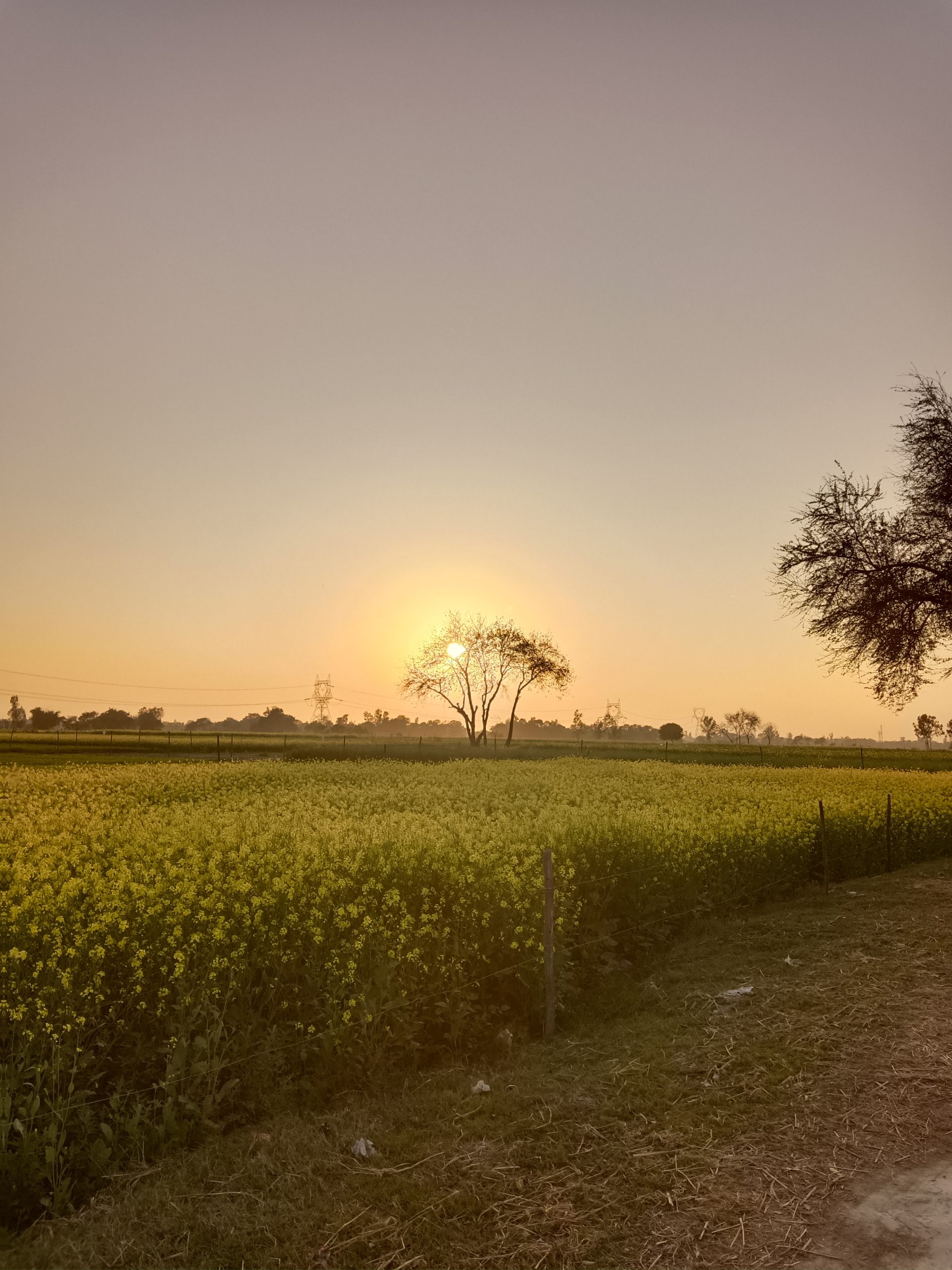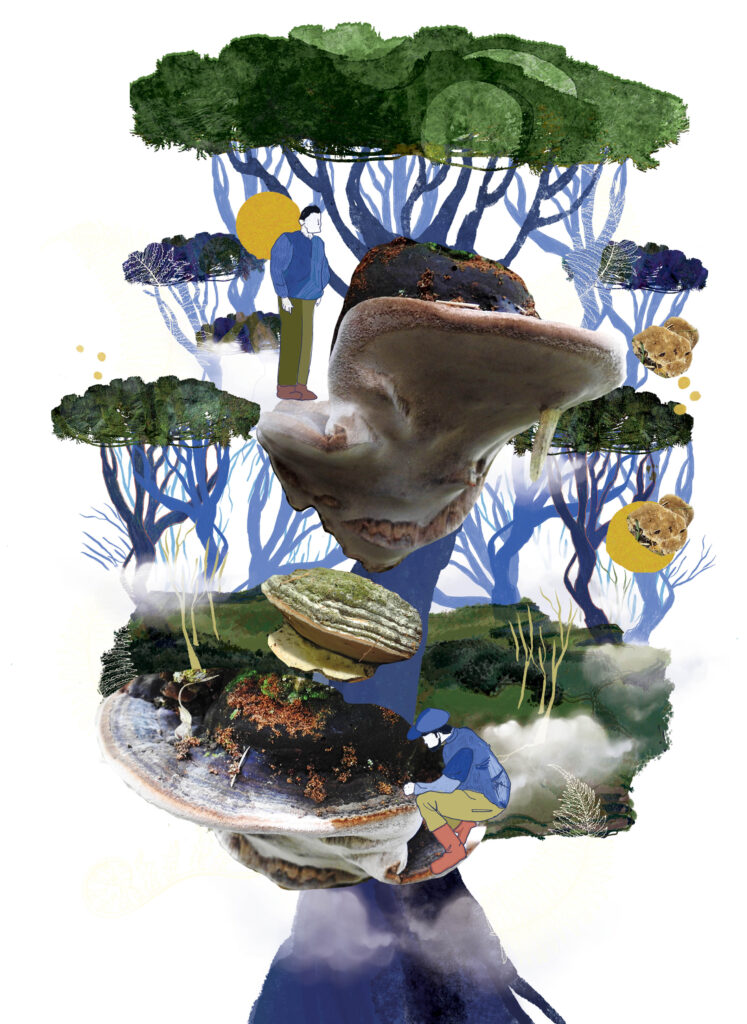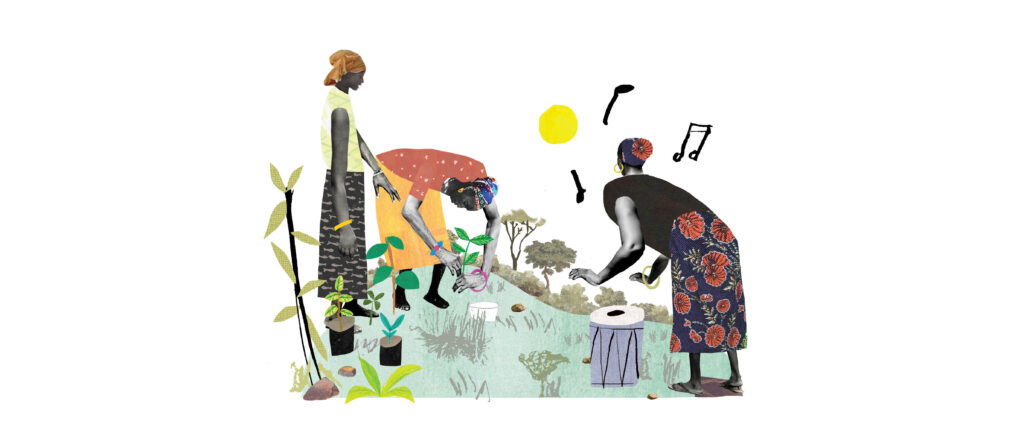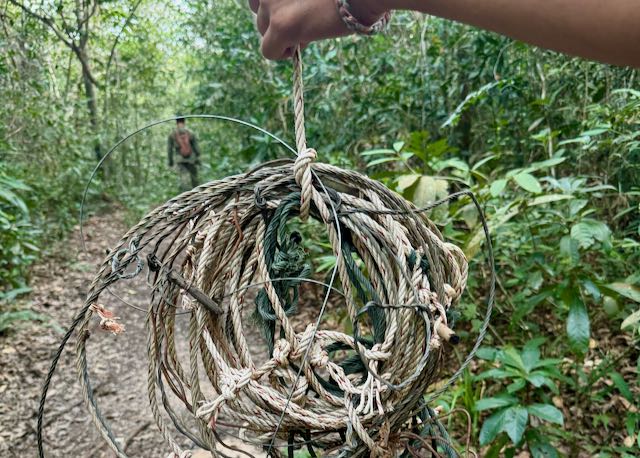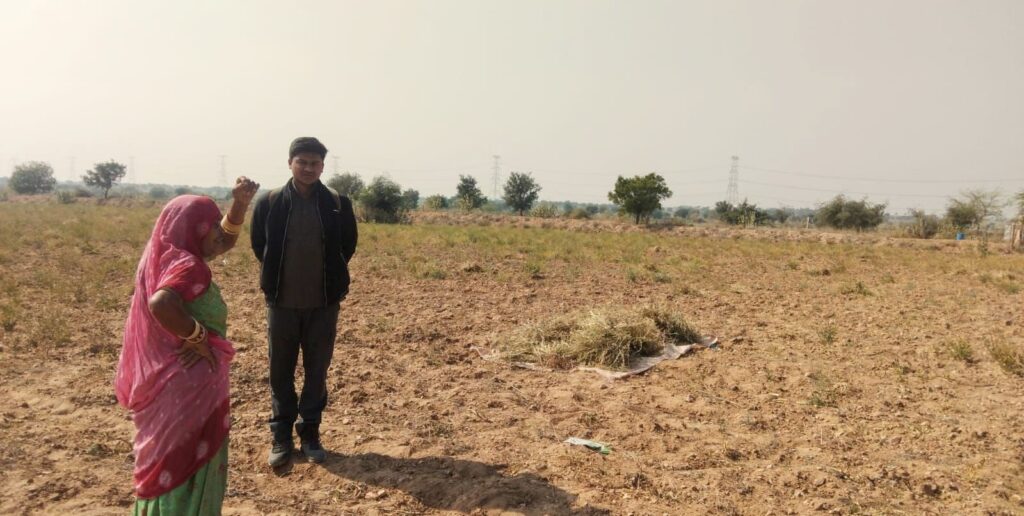This is the story of my colleague Dipti and I, of what we learnt about ourselves and our landscape while conducting research in Barabanki district of Uttar Pradesh, India. I am a wildlife ecologist from Lucknow, the capital of Uttar Pradesh, and I belong to a family of farmers who still practice agriculture for their livelihood. On the other hand, Dipti is a social scientist from the urban environment of Delhi.
The focus of our current research is human–sarus crane interactions in Uttar Pradesh, where the cranes share space with farmers. It is a predominantly agricultural landscape, where the major crops sown are wheat, mustard and potatoes along with some seasonal vegetables. The main conservation issues are water pollution and electrocution as per the community views and Our fieldwork primarily consisted of participant observation and interviews, through which we are documenting people’s ecological knowledge of the Sarus crane.

One fine day in February, while walking amidst agriculture fields, Dipti and I observed a bright yellow crop stretched out across the landscape in full bloom. I turned to Dipti, and with an air of confidence and pride, quizzed her about the crop we saw in front of us.
“Dipti! Do you know which crop this is?”
“Yes, It’s mustard.”
“Great. What are its uses?”
“We use mustard seeds and oil for cooking,” Dipti responded.
“Okay, do you know which part of it is used for extracting oil?”
Dipti thought hard and replied, “Maybe from the flower!”
I was quite surprised by her answer and started laughing! I made fun of her, how she could possibly imagine oil being extracted from the flower rather than the seed. Eventually, I explained to her that the oil is extracted from the seeds and detailed the entire process of oil production. She was not convinced, “But the seed is so small, how can the oil be made from it?”
Funnily, as difficult as it was for Dipti to imagine oil being produced from these tiny seeds, it was also difficult, and hilarious, for me to imagine oil being extracted from flowers! I couldn’t understand how someone could not know a fact as basic as this, something so obvious for anyone who has grown up in an agricultural landscape. I was rather pleased with myself and painted Dipti as ignorant.
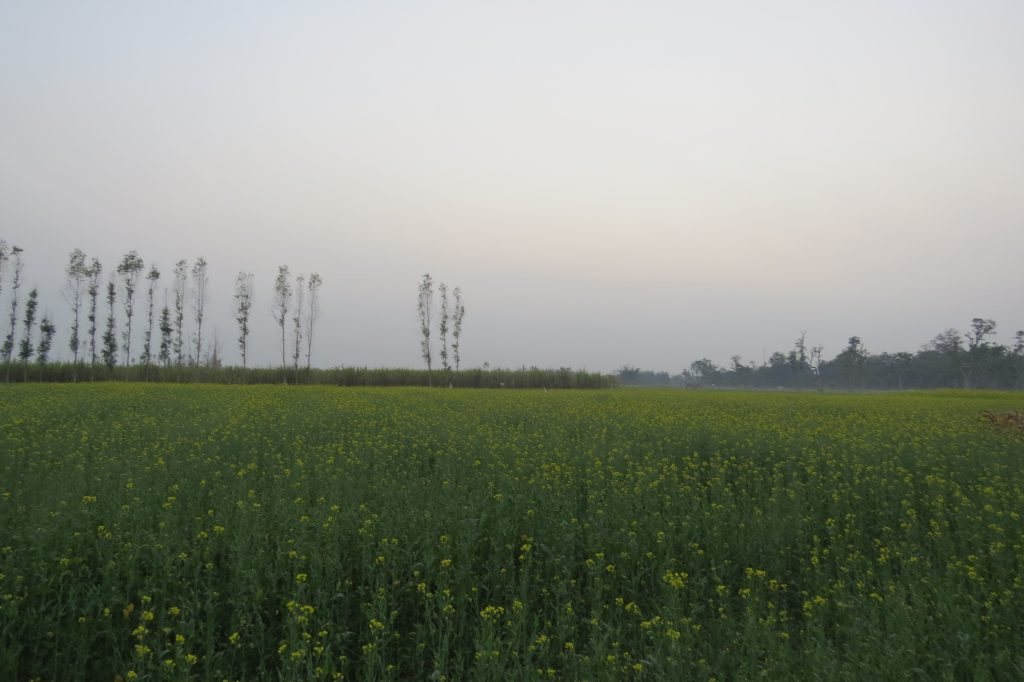
Walking ahead, we both noticed that the yellow flowers had two different shades: lemon yellow and golden yellow. We were confused. Why was this? Based on my scientific knowledge and childhood experience, I guessed that the darker flowers were ready for ripening, while the other wasn’t yet mature. Or perhaps because of pollinators’ activities—the light colour of the flower might mean that the nectar is gone, while the darker ones still have nectar for insects and birds.
Dipti plucked a few flowers and started observing their morphology, without much success. After a half an hour, we asked a farmer who was walking towards us. He said he was a local, and he was curious about where we had come from and why.
We explained our research to him and asked if sarus cranes were seen living in mustard fields. They did not, he explained, because the seeds are bitter in taste, which the birds did not like and moreover, they could not hold the tiny seeds with their beak.
We also took the opportunity to ask about the varying shades of the mustard flower, to which he responded that different varieties of mustard crops have different shades of yellow. Pointing towards the light-yellow crop said, “This one is yellow mustard and the golden yellow one is black mustard. The lemon-yellow flower has a small seed compared to the golden yellow flower. And even the seed colour is different—yellow mustard seeds are lighter in shade whereas the golden mustard seeds are darker (black).” He also added that black mustard is better than yellow mustard and is usually sown for self-subsistence, whereas the other one is grown for commercial purposes.
On returning home to Lucknow, we shared our findings with my mother. She was surprised about our lack of knowledge and explained that yellow mustard has small seeds and produces more oil but is less tasty, whereas the black mustard seed produces less oil but tastes far better. She further elaborated:
“दोनों सरसों का पेड़ अलग अलग होता है अगर थोड़ा ध्यान से देखे! पीली वाली सरसो का पौधा थोड़ा छोटा लगभग तीन फिट का होता है लेकिन काली वाली पांच से सात फिट तक पहुंच जाती होंगीI पीली की पत्ती छोटी और नुकीली होती है वही काली वाली चौड़ी होती है दोनों की छीमी( pods) भी अलग होती है पीली वाली छोटी और मोटी होती है लेकिन काली की लम्बी और पतली, लोग अक्सर सोचते है काली सरसों में तेल ज्यादा निकलेगा लेकिन पीली में ज्यादा निकलता है चाहे वो छोटी ही क्यों न हो”
“Both the mustard crops look different if seen with concentration. Yellow mustard crop is smaller, about 3 ft, while the black mustard is 5–7 ft. The leaves of yellow mustard are small, pin-shaped and narrow, while the leaves of the black one are broad and large. Even the pods are different, yellow mustard has small and thick pods, while black mustard pods are longer and thinner.”
I felt ashamed by my lack of knowledge about crops, despite being from an agricultural family. And while I had poked fun at Dipti, there was much that I didn’t know either. Observing the landscape around us and asking questions had been a rewarding process.
That day served as an eye-opener for us. We understood the importance of shared learning. Outside of books and our own limited observations, nature education requires the integration of the traditional knowledge of local communities, who interact with natural resources and wildlife on a daily basis. Finally, we learnt that when nature education includes local knowledge, it only gets contextually richer, with different lived experiences and diverse interactions.
